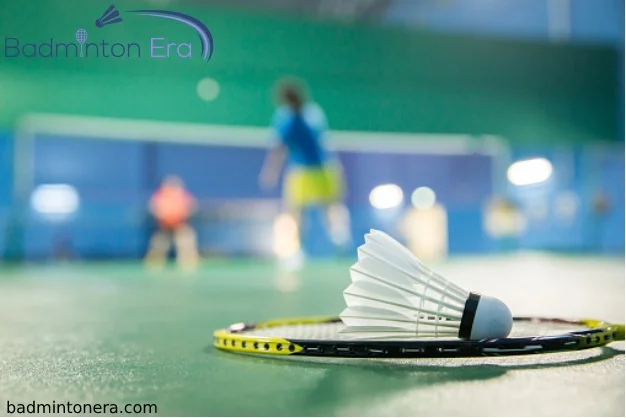How Badminton Differs from Other Racquet Sports?
Badminton, a popular racquet sport, stands out among other similar games due to its unique characteristics and gameplay. While sports like tennis, squash, and racquetball share similarities with badminton, there are notable distinctions that set it apart.
In this article, we will explore how badminton differs from other racquet sports, examining elements such as court dimensions, equipment, scoring systems, and gameplay strategies. By understanding these differences, both players and enthusiasts can gain a deeper appreciation for the nuances of badminton and develop a stronger grasp of its distinctive nature.
What Makes Badminton Different from Other Racket Sports?
Badminton distinguishes itself from other racket sports through several unique features. Firstly, in badminton, players stand diagonally opposite each other on the court, specifically during the service. Unlike other racket sports where players may be positioned differently, badminton maintains this consistent arrangement throughout the game.
Moreover, badminton has specific rules governing the serve. The shuttlecock must be held below 1.15 meters from the ground, and the server must strike it with a backward motion of their racket head. Unlike some other sports, badminton does not allow for do-overs if the serve is faulty, adding an additional layer of challenge and precision to the game.
Additionally, badminton employs a rally scoring system, where points can be scored by any player, regardless of who served. This scoring system differs from other sports where only the serving player can score points. The player who wins a rally earns the right to serve for the next point, further contributing to the dynamic nature of the game.
These unique elements combine to make badminton the fastest racket sport in the world. The consistent player positioning, specific serve rules, and rally scoring system all contribute to the fast-paced and thrilling nature of the game. As a result, badminton has gained a reputation as one of the most exciting and enjoyable racket sports globally.
In summary, the distinct characteristics of badminton, such as the player positions, service rules, and rally scoring system set it apart from other racket sports. These elements contribute to its status as the fastest racket sport and contribute to the unique and exhilarating experience of playing and watching badminton.

Court Dimensions and Equipment:
One of the key differences between badminton and other racquet sports lies in the court dimensions and equipment used. A standard badminton court measures 13.4 meters long and 6.1 meters wide for singles matches, while doubles matches require a wider court, measuring 13.4 meters in length and 8.2 meters in width. The net in badminton is set at a height of 1.55 meters at the edges and 1.524 meters at the center.
Additionally, badminton rackets differ from those used in other racquet sports. Badminton rackets are typically lighter in weight, weighing around 80-100 grams, allowing for quicker swings and greater maneuverability. The strings on a badminton racket are also strung at higher tensions to generate more power and control during shots.
Scoring Systems:

Another aspect that sets badminton apart from other racquet sports is its scoring system. Badminton follows a rally scoring system, meaning points can be scored by both the serving and receiving players. In this system, a point is awarded for every rally won, regardless of the server’s position. Matches are typically played in best-of-three games, with the first player or team to reach 21 points winning each game. However, if the score reaches 20-20, the game continues until one player or team achieves a two-point lead.
In contrast, sports like tennis, squash, and racquetball use a point-a-rally scoring system, where only the serving player can score points. Games in these sports are usually played to a set number of points, such as 15 or 11, with the winner needing to win by a margin of two points.
Gameplay Strategies:
The gameplay strategies in badminton differ significantly from other racquet sports. Badminton emphasizes speed, agility, and finesse, requiring players to constantly move around the court, change directions quickly, and execute precise shots. The shuttlecock, made of feathers or synthetic materials, has a much slower speed compared to balls used in tennis, squash, or racquetball. This slower pace allows players to engage in longer rallies, where strategy, shot placement, and deception play vital roles.
In badminton, players must employ a variety of shots such as smashes, clears, drops, and drives to outmaneuver their opponents. Unlike tennis, where the ball can be hit with topspin or slice, badminton shots rely primarily on control and accuracy. The delicate touch required for drop shots and net play adds an element of finesse that distinguishes badminton from other racquet sports.
Furthermore, badminton demands exceptional footwork due to the need to cover a large court area quickly. Players must be adept at moving forward, backward, and laterally to retrieve shots and maintain good court coverage. The ability to change directions swiftly and anticipate the opponent’s shots is crucial for success in badminton.

Conclusion:
Badminton differentiates itself from other racquet sports in various ways. From the court dimensions and equipment used to the scoring systems and gameplay strategies, badminton presents a unique and captivating experience. The smaller court size, lighter rackets, and higher string tensions in badminton contribute to its fast-paced nature and require players to possess exceptional agility and quick reflexes. Moreover, the rally scoring system and emphasis on finesse shots and deceptive play set badminton apart from other racquet sports that rely more on power and endurance. Understanding and appreciating these differences allows players and enthusiasts to truly embrace the beauty and intricacies of badminton as a distinct and engaging sport.







